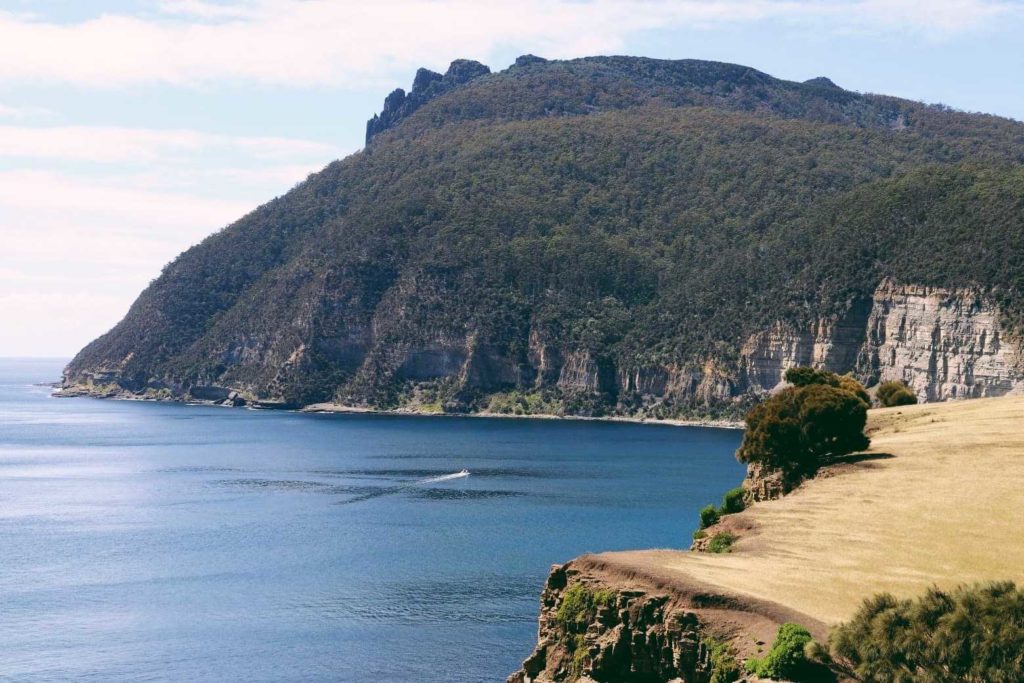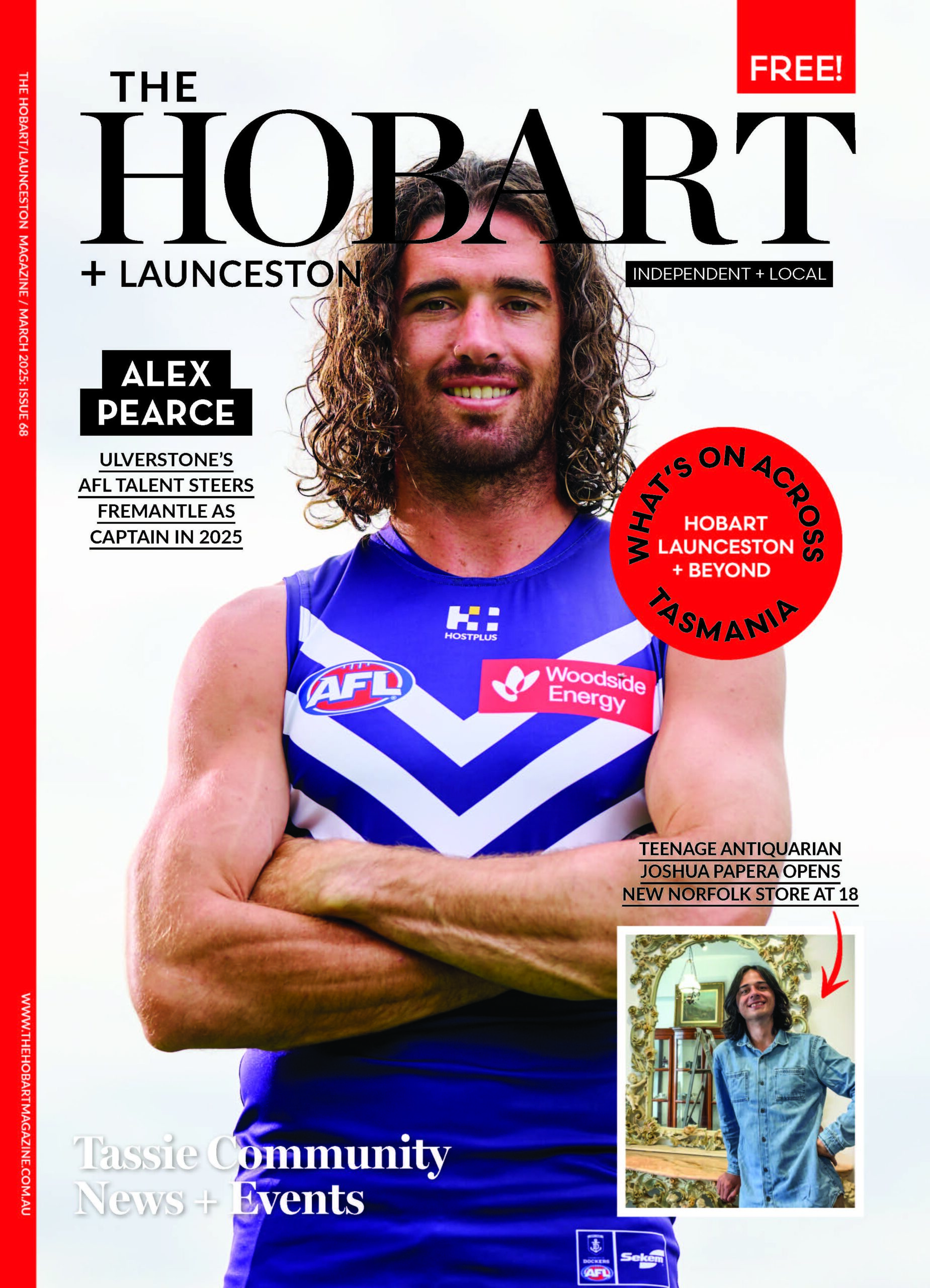How to Cover Maria Island in Under Seven Hours
by Zilla Gordon

My hiking boots lay forgotten on the sand. Next to them, my jacket and hat are hung off a piece of driftwood. Leggings pulled up over my knees, I’m standing calf-deep in the crisp clear water.
With 18km of walking behind me, an afternoon on Maria Island’s Darlington Bay is a tranquil way to spend a couple of hours before I board the ferry and head back to Hobart.
Maria Island, a former penal colony, sits just off the east coast of Tasmania and, while only small in size, its rich history and rugged landscape make it a desirable day trip.
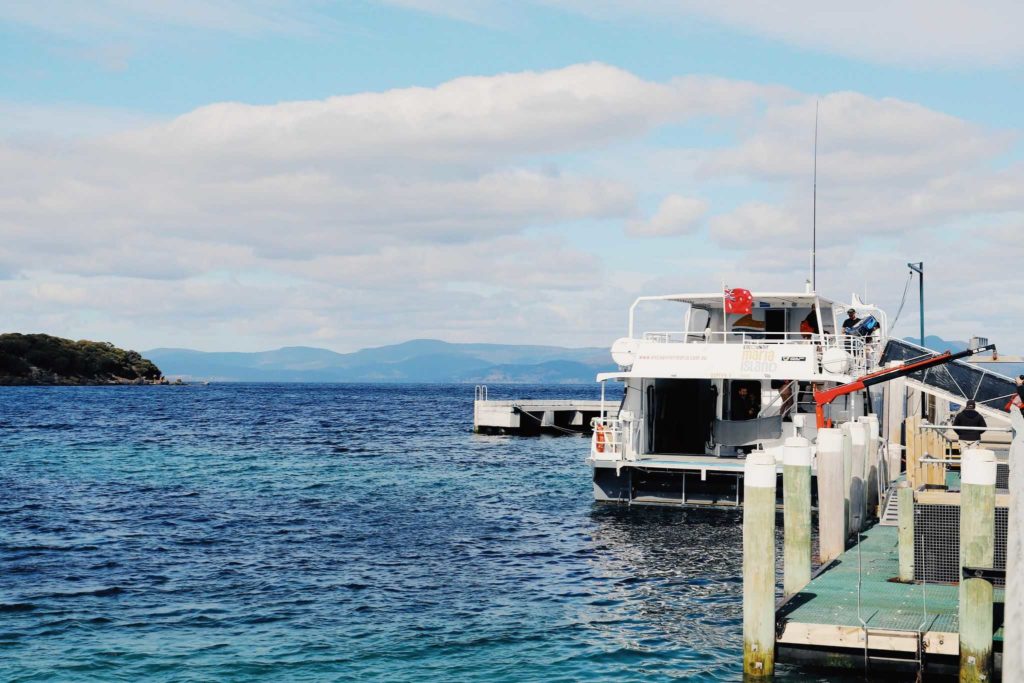
It’s 5am. My Saturday morning sleep-in is taking a backseat as I take the front seat for the early-but-easy 75-minute drive to Triabunna.
Making it to the ferry terminal with plenty of time for my 8.30am departure, I check-in, and get a map of the island and recommendations of some walks that will have me back in time for the 4.15pm return boat.
The ferry ride is a smooth 45 minutes, and I’m eagerly looking out the window looking for signs of rain. Even though it’s summer, the forecast is a meagre 19 degrees with a high chance of rain.
So my trusty puffer jacket, gloves and a scarf are also in my backpack.
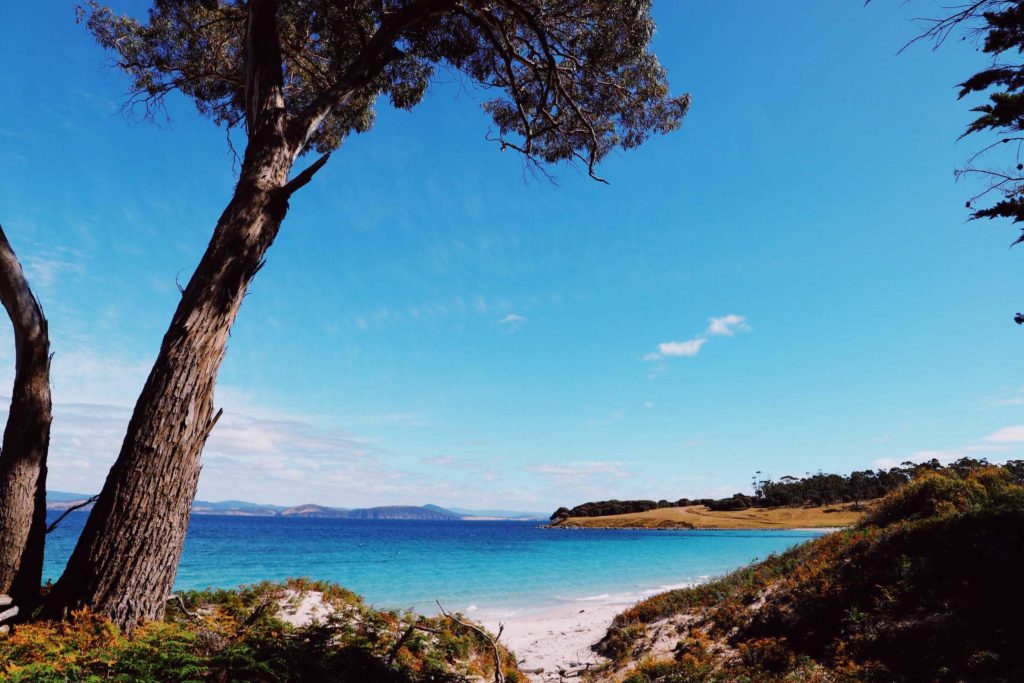
Three easy walks
Disembarking, I’m struck by the postcard-blue of the water, but I’m focused on heading straight to the Painted Cliffs.
While short in stature, these cliffs make up for it with their striking honeycomb patterns created when water dripped through and stained the stone some 200 million years ago.
It’s best explored during low tide, but it only takes a 40-minute power walk to reach the Cliffs at Hopground Beach.
I make it just in time for a quick clamber around the shell-like rocks.
While I could spend more time here, the incoming tide is fast encroaching on my path back.
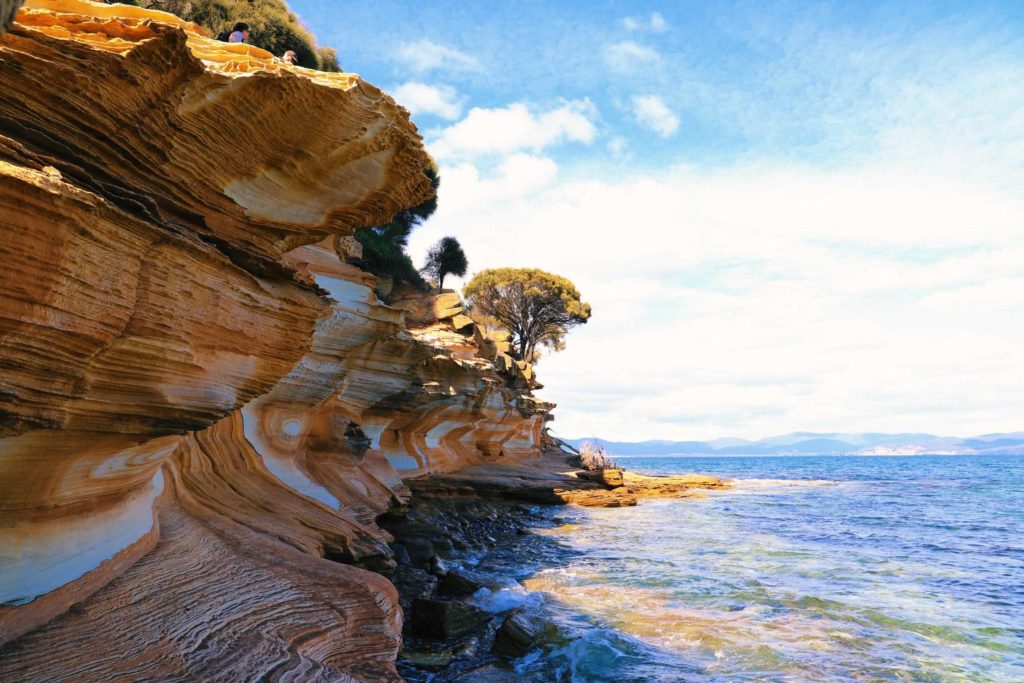
After beating the tide to the Painted Cliffs it’s then onto the Fossil Cliffs walk.
Heading to the other side of the island via Darlington Township (where you’ll find overnight accommodation, bike hire and bathrooms), the walk is an easy stroll past crumbling remains of colonial cottages before the path makes way for an expanse of yellow-gray grass.
My breath labours as I head uphill, but I’m quickly at the edge of the towering cliffs.
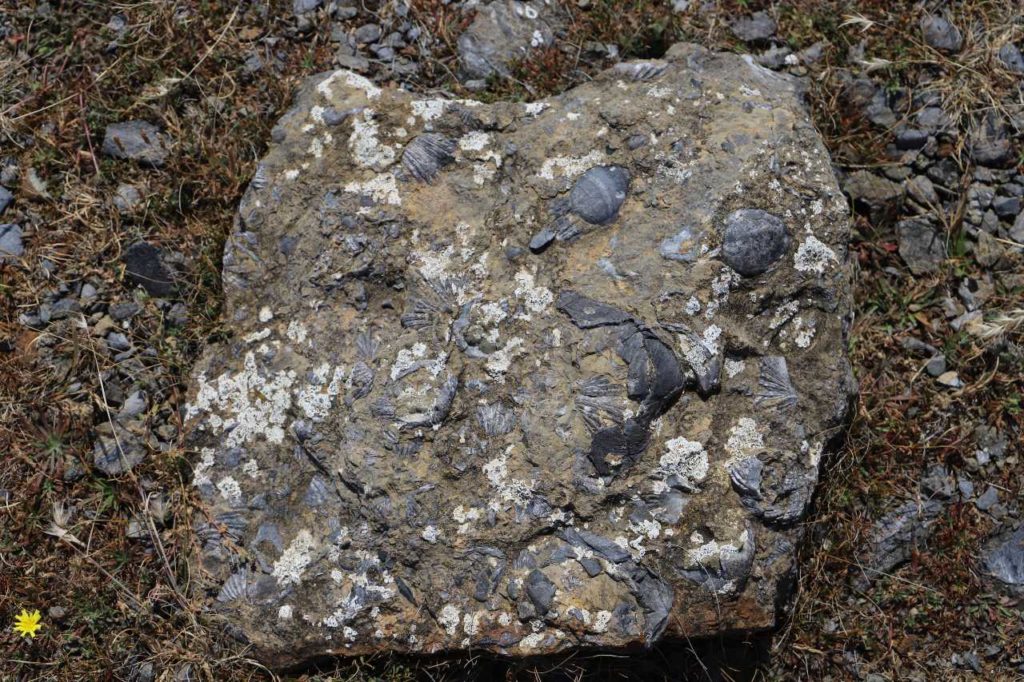
From the right, the view takes in Bishop and Clerk and Mount Maria – two popular hikes, but both requiring more than the six or so hours I had to explore.
The fossil walk continues around to the left and leads down to a rock shelf.
The shelf is home to hundreds of fossils and I spot clams, scallop shells and coral trapped in the rock.
More than 300 million years old, the walk has some of the best displays of fossils anywhere in the world.
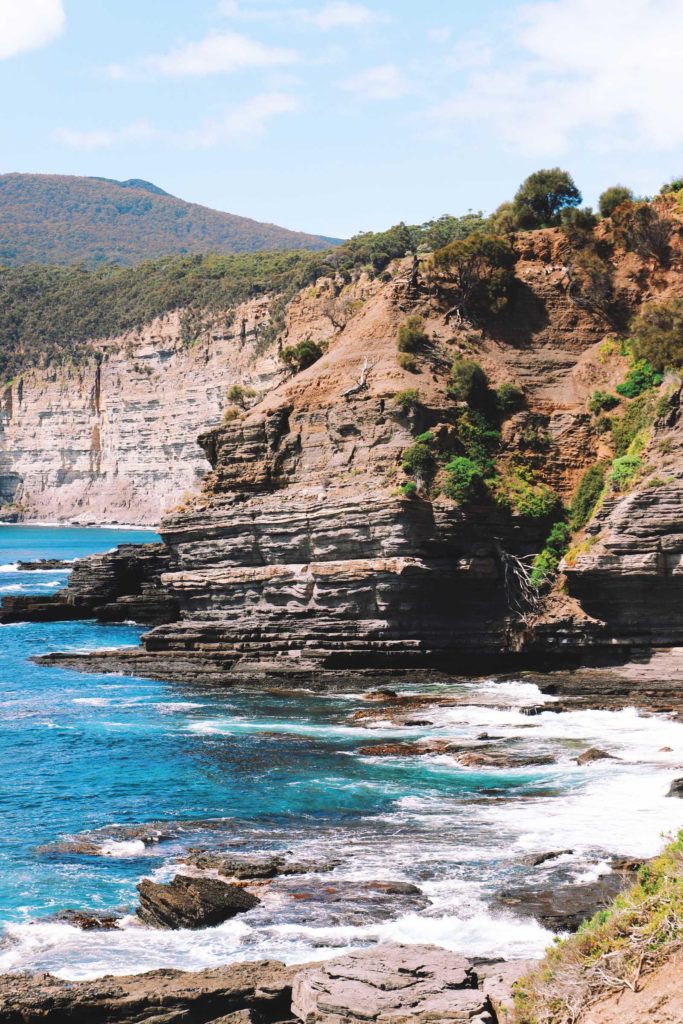
Stopping for a few photos, I head back to Darlington via the airstrip and the seaside cemetery, which is home to graves more than a century old.
Although first established as a penal colony, Maria Island later housed cement works.
That’s how Tomas and his wife Rose came to rest there. Tomas died in an accident while working at the cement works in 1890.
Fifty-two years later, Rose was laid to rest next to her husband, becoming the last person to be buried on the island.
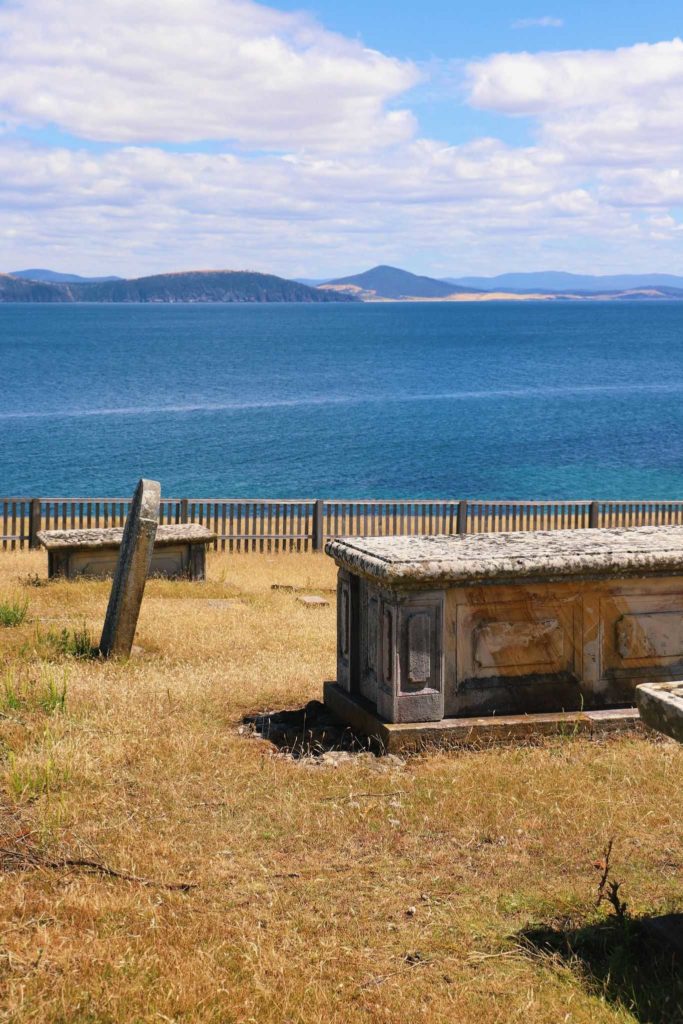
I break for lunch back in Darlington and head out on my final walk of the day – the Reservoir Circuit.
I’m struck by the change in flora. Although just inland, the path weaves its way through eucalyptus trees and the narrower track consists of grey-black sand.
It seems beachy.
The gentle path leads to a clearing by the reservoir, and while it doesn’t offer views spectacular as those on the coast, the chorus of croaking frogs make it a nice place to stop for a break.
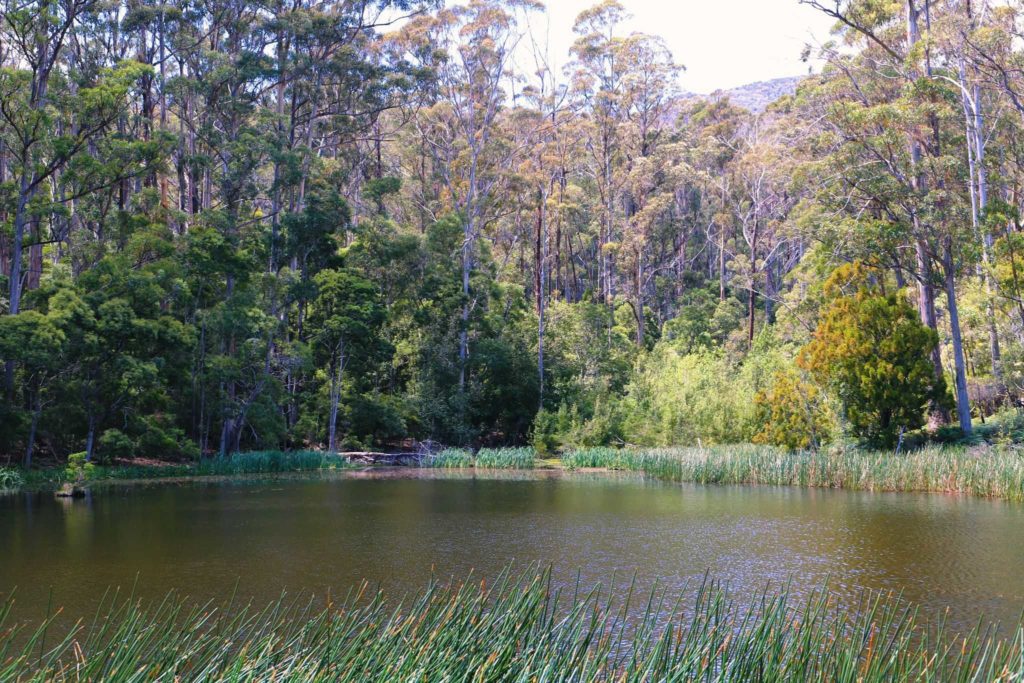
Take Your Time
I’ve done a bit of hiking in Tasmania. Normally it’s a push to the peak. It’s sometimes only when you reach the top that you stop to breathe in the view.
Maria Island is different.
You explore, wander rather than looking at your feet to take your next step.
There’s no rush.
The paths are wide and well-kept allowing you to spot pademelons or wombats grazing near campsites.
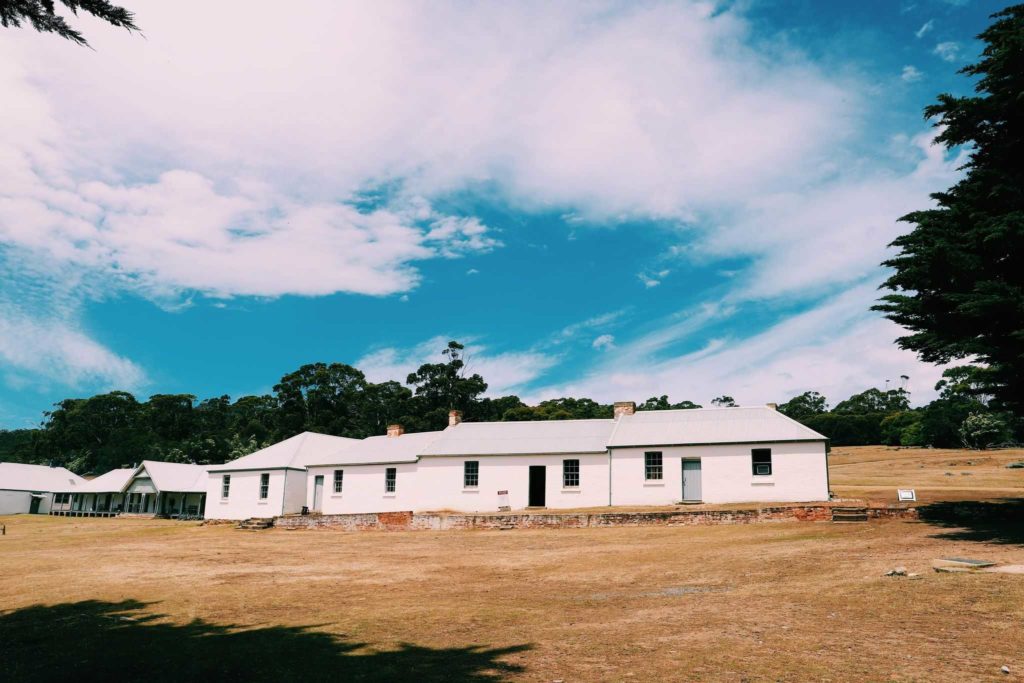
Having made it through the three walks in around four hours, I’m again reminded that it’s not a race to the summit.
Instead of the predicted grey weather, the sun is shining so I brave a quick dip in the cold water.
At first I was worried that a day wouldn’t be enough.
Like all things in Tasmania, of course there is plenty more to see and do, but Maria Island has made the perfect day trip.
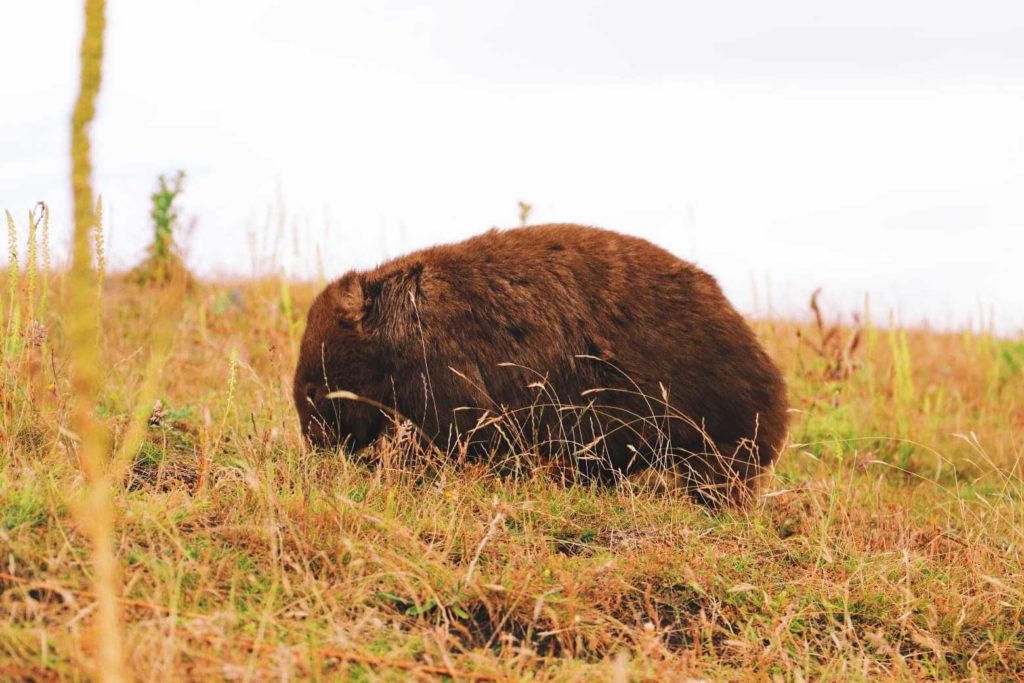
Maria Island is a National Park, so you’ll need a Parks Pass. Ferry tickets are $45 for adults, but only include 7kg of hand luggage so keep that in mind if you’re camping. There are no shops, cafes or supplies on the island so you’ll need to bring everything with you including food, a refillable water bottle, good walking shoes, weather-appropriate clothing and any first aid supplies – however limited drinking water is available; if you’ve forgotten anything, there is an IGA at Triabunna near the ferry terminal. Basic bunkhouse accommodation can be booked at $44 per night for up to two people, and there are free campsites around the island – book before you leave. If walking’s not your thing you can hire a bike for $33 a day. Maria Island is also home to furry and feathered friends – although you’re bound to see a wombator two, make sure you snap a photo from no less than two metres away!
